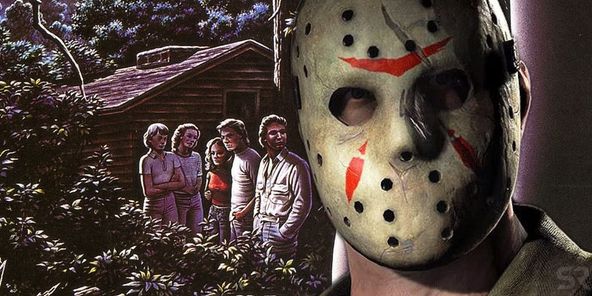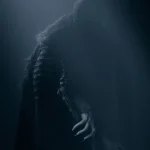Friday the 13th (1980)

Sean S. Cunningham’s Friday the 13th (1980) is a seminal film in the horror genre, renowned for its influential role in shaping the slasher film tradition. Produced by Cunningham and written by Victor Miller, the film features a cast led by Betsy Palmer, Adrienne King, and Kevin Bacon. Friday the 13th introduces audiences to the iconic setting of Camp Crystal Lake, where a series of grisly murders unfolds. The film’s innovative approach to suspense, its memorable twists, and its impact on the horror genre make it a classic example of early slasher cinema.
The plot of Friday the 13th is set around the reopening of Camp Crystal Lake, a summer camp that has been closed for years following a series of tragic events. The camp is preparing for a new season, and a group of young counselors arrives to prepare the grounds for the incoming campers. The film’s tension builds as it becomes apparent that someone with a malevolent agenda is targeting the counselors.
The narrative unfolds with the counselors experiencing a series of unexplained events and disappearances, leading up to a series of violent murders. The suspense intensifies as the body count rises, and the remaining counselors must confront the terror that lurks in the shadows. The film culminates in a shocking revelation and a memorable twist that has become a hallmark of the genre.

The film features a cast of relatively unknown actors, many of whom were relatively new to the film industry. Despite their limited experience, the performances contribute effectively to the film’s tension and atmosphere. Adrienne King’s portrayal of Alice Hardy, the final girl of the film, is a standout performance. Alice’s character is depicted as resourceful and resilient, embodying the archetypal final girl who survives the horrors of the narrative. King’s portrayal adds depth to the character, making her a relatable and sympathetic protagonist.
Betsy Palmer’s performance as Mrs. Pamela Voorhees is particularly noteworthy. Palmer brings a chilling intensity to the role, creating a memorable antagonist whose motivations are revealed in a dramatic twist. Mrs. Voorhees’ character is a key element in the film’s narrative, and Palmer’s portrayal effectively conveys the character’s emotional depth and psychological complexity.
Friday the 13th explores several themes central to the slasher genre. One of the primary themes is the concept of retribution and the cycle of violence. The film’s antagonist, Mrs. Voorhees, is driven by a desire for vengeance following the death of her son, Jason, who drowned at the camp years earlier. This theme of retribution is a common motif in slasher films, where the killer is often motivated by a personal tragedy or injustice.
The film also examines the theme of innocence versus corruption. The counselors at Camp Crystal Lake are portrayed as well-meaning but flawed individuals, engaging in behavior that is often depicted as morally questionable. This theme is reflected in the film’s use of violence as a form of punishment for perceived sins, a common trope in the slasher genre.
Additionally, Friday the 13th uses the setting of the camp as a symbol of both nostalgia and danger. The camp, initially depicted as a place of innocent fun and relaxation, becomes a site of terror and death. This juxtaposition of the familiar and the horrific adds to the film’s sense of dread and unease.

The cinematography of Friday the 13th, led by Barry Abrams, plays a crucial role in creating the film’s suspenseful atmosphere. The use of natural lighting and the film’s rural setting contribute to a sense of isolation and vulnerability. The camera work often employs tight, claustrophobic shots that enhance the feeling of being trapped in the camp with the killer.
The film’s visual style is marked by its use of shadow and darkness to build tension. The contrast between light and dark creates a sense of foreboding and amplifies the impact of the film’s shocking moments. The iconic imagery of the camp’s dense woods and its eerie surroundings adds to the film’s overall sense of dread.

The score of Friday the 13th, composed by Harry Manfredini, is an essential element in establishing the film’s atmosphere. The score features a distinctive and memorable musical motif, often referred to as “ki-ki-ki, ma-ma-ma,” which is used to signify the presence of the killer. This musical theme has become one of the most recognizable elements of the film and has been widely imitated in subsequent horror films.
The soundtrack also includes a range of atmospheric and suspenseful music that complements the film’s tension and enhances its emotional impact. Manfredini’s score is a key component in creating the film’s eerie and unsettling mood.

Friday the 13th received mixed to positive reviews from critics upon its release but was praised for its ability to generate suspense and deliver scares. The film’s success at the box office demonstrated its appeal to audiences and solidified its place in the horror genre. Over the years, Friday the 13th has become a seminal work in the slasher genre, influencing countless films and franchises that followed.
The film’s legacy is marked by its contribution to the development of the slasher genre, establishing many of the conventions that would become staples of the genre. The use of a mysterious and vengeful killer, the “final girl” trope, and the incorporation of shocking twists and suspenseful sequences are elements that have been emulated in numerous subsequent films.
In conclusion, Friday the 13th is a foundational classic in the slasher horror genre, known for its suspenseful narrative, memorable twists, and iconic imagery. Sean S. Cunningham’s direction, combined with strong performances, effective cinematography, and a distinctive score, ensures that the film remains a significant and influential work in horror cinema. Its impact on the genre and its enduring popularity underscore its status as a landmark film in the history of horror.











